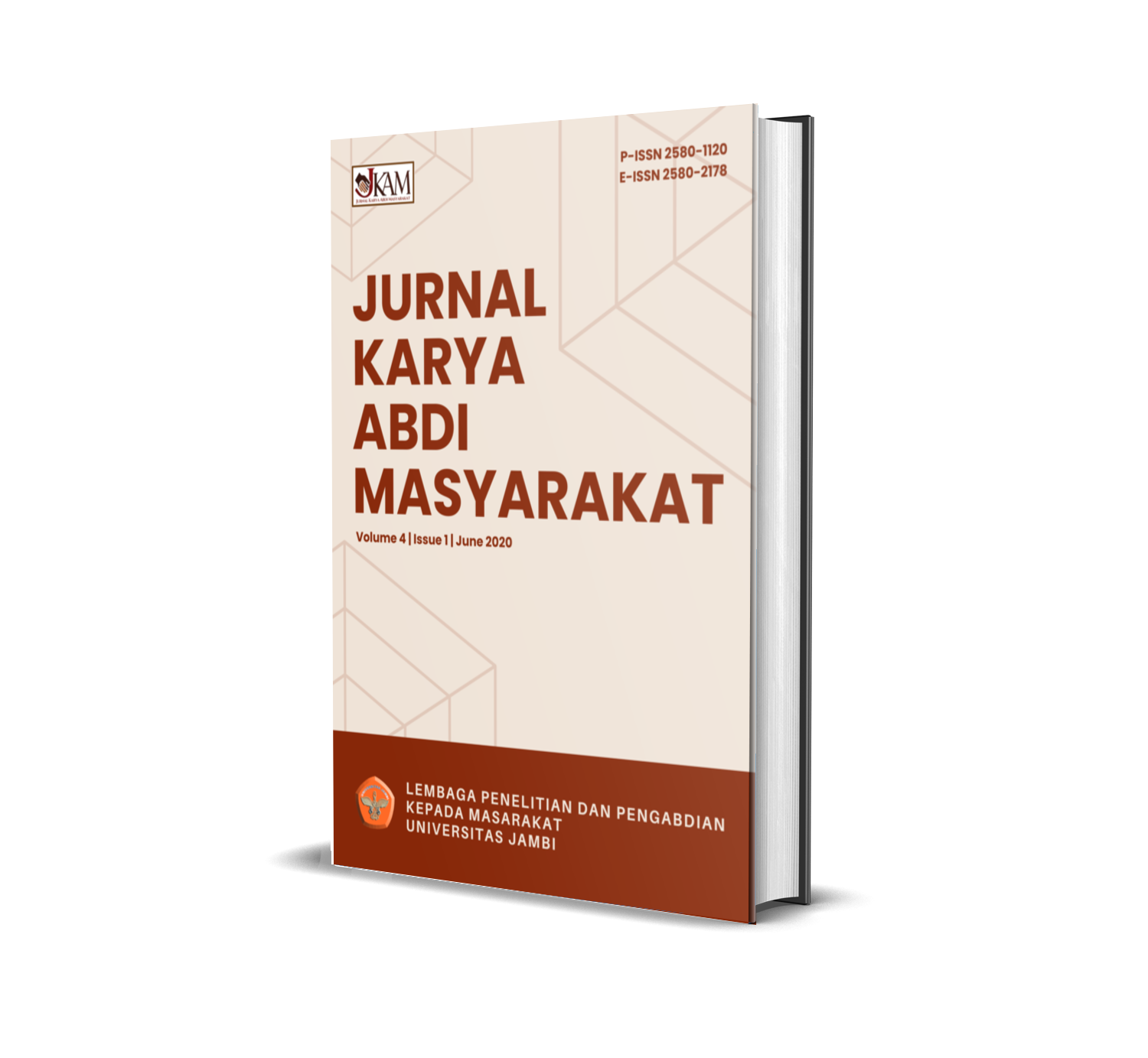Agroforestry Berbasiskan Jelutung Rawa Dan Tanaman Pinang Pada Masyarakat Desa Bram Hitam Kanan Kecamatan Bram Hitam Kabupaten Tanjung Jabung Barat
DOI:
https://doi.org/10.22437/jkam.v4i1.9825Abstract
The potential of peatlands for agriculture is very dependent on the type of vegetation and the substrate or the bottom soil and the condition of the hinterland area (Djaenudin, 2008). Not all types of agricultural crops can adapt to this type of land, only certain types can grow and develop well on peatland types. Peatlands have various characteristics depending on the composition of their formation. An appropriate and ideal development pattern for this land is through an integrated farming system (Sudana, 2005). Jelutung can adapt well to both submerged and non-submerged peat soils, jelutung growth in various planting patterns shows an average increment of 1.7 cm / year. In practice, jelutung is planted after oil palm and areca nut are 2-3 years old. However, cropping patterns in peat soils require quite intensive land treatment in the form of drainage / ditches and imposing. To get optimal productivity from a combination of jelutung with other tree crops, it is necessary to research and observe in depth the feasibility of planting patterns both in terms of biophysical and economic aspects. The agroforestation process and community adoption in planting jelutung on owned land are still hampered by obstacles such as access to land and policy instruments. Limited land causes farmers to prefer plants that have long been cultivated such as coffee, areca nut, rubber, and coconut. Planting areca nut on community-owned peatlands by slightly raising the land to be planted. This is intended to overcome the presence of excess water during the rainy season. In general, areca nuts will begin to bear fruit after the age of 3-4 years. The development of areca nut which is growing rapidly in Jambi Province, especially in Kuala Tungkal Regency is influenced by better and more stable market prices. This is influenced by the development of the areca processing industry in Kuala City. Community service is carried out jointly with the Tani Karya Mandiri group, Bram Itam Kanan Village, Bram Itam District, Tanjung Jabung Barat District, Jambi. The method used in Community Service (PPM) is in the form of counseling together with providing Jelutung Swamp seeds obtained from seed breeders in Muara Jambi and the rest from the location of Peat Protection Forest (HLG) around Bram Itam District intensively and subsequently conducting demonstrations planting between areca nut plants belonging to the village community or farmer groups.
Downloads
Downloads
Published
How to Cite
Issue
Section
License
Please find the rights and licenses in Jurnal Jurnal Karya Abdi Masyarakat (JKAM).
- License
The non-commercial use of the article will be governed by the Creative Commons Attribution license as currently displayed on Creative Commons Attribution 4.0 International License.
- Authors Warranties
The author warrants that the article is original, written by stated author(s), has not been published before, contains no unlawful statements, does not infringe the rights of others, is subject to copyright that is vested exclusively in the author and free of any third party rights, and that any necessary written permissions to quote from other sources have been obtained by the author(s).
- User Rights
JKAM's spirit is to disseminate articles published are as free as possible. Under the Creative Commons license, JKAM permits users to copy, distribute, display, and perform the work for non-commercial purposes only. Users will also need to attribute authors and JKAM on distributing works in the journal.
- Rights of Authors
Authors retain the following rights:
- Copyright, and other proprietary rights relating to the article, such as patent rights,
- The right to use the substance of the article in future own works, including lectures and books,
- The right to reproduce the article for own purposes, provided the copies are not offered for sale,
- The right to self-archive the article.
- Co-Authorship
If the article was jointly prepared by other authors, the signatory of this form warrants that he/she has been authorized by all co-authors to sign this agreement on their behalf, and agrees to inform his/her co-authors of the terms of this agreement.
- Termination
This agreement can be terminated by the author or JKAM upon two months notice where the other party has materially breached this agreement and failed to remedy such breach within a month of being given the terminating party notice requesting such breach to be remedied. No breach or violation of this agreement will cause this agreement or any license granted in it to terminate automatically or affect the definition of JKAM.
- Royalties
This agreement entitles the author to no royalties or other fees. To such extent as legally permissible, the author waives his or her right to collect royalties relative to the article in respect of any use of the article by JKAM or its sublicensee.
- Miscellaneous
JKAM will publish the article (or have it published) in the journal if the articles editorial process is successfully completed and JKAM or its sublicensee has become obligated to have the article published. JKAM may conform the article to a style of punctuation, spelling, capitalization, referencing and usage that it deems appropriate. The author acknowledges that the article may be published so that it will be publicly accessible and such access will be free of charge for the readers.














